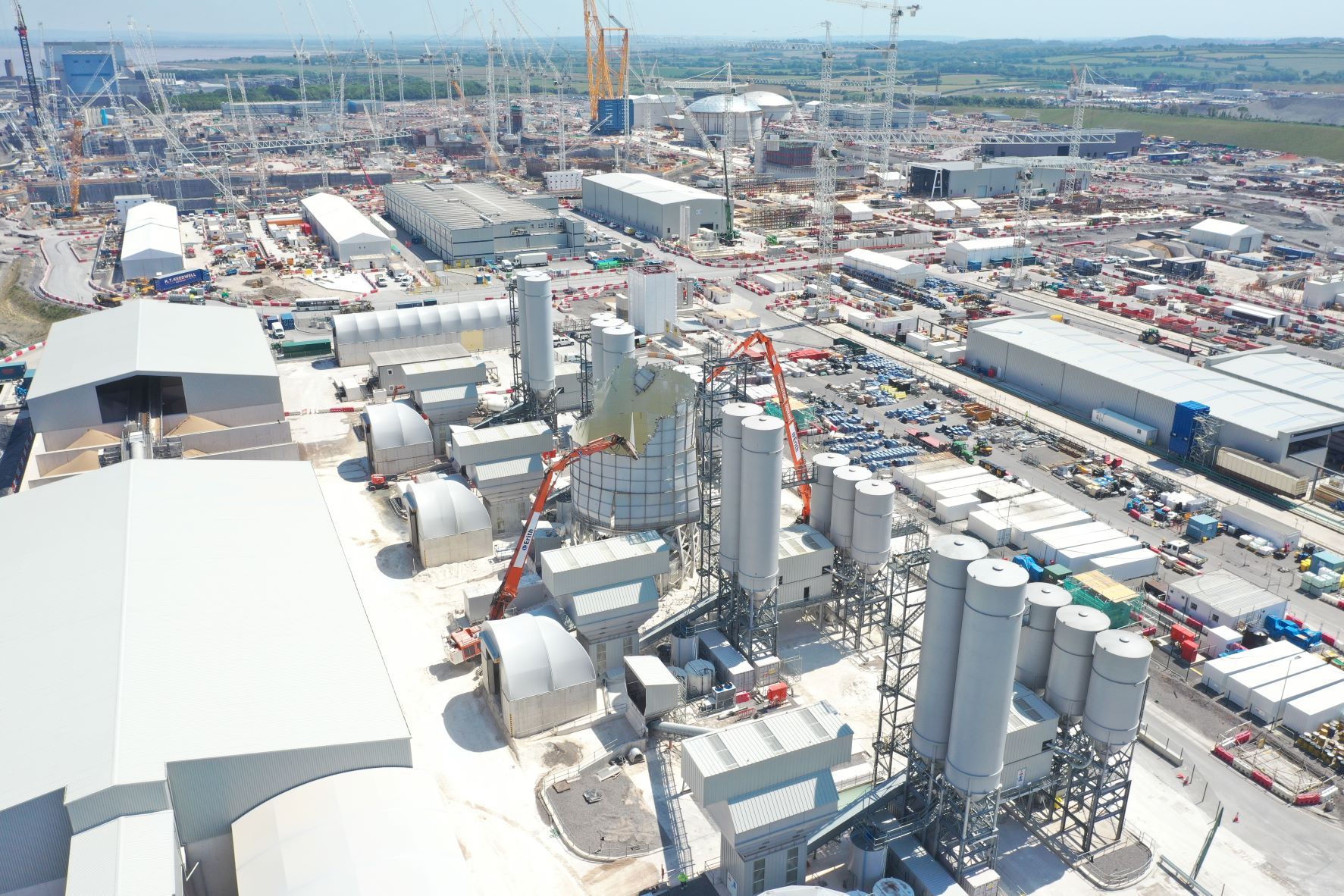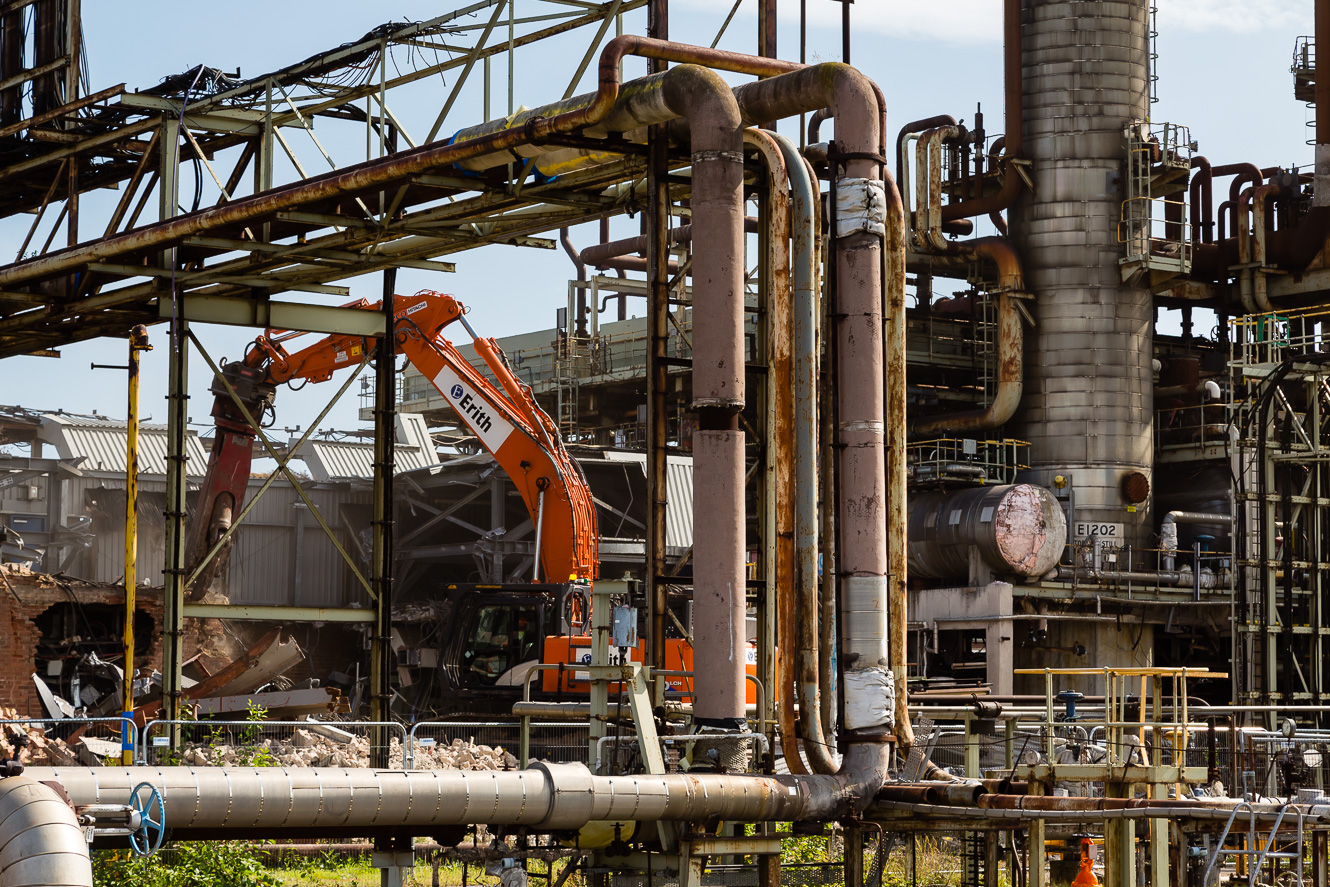We maintained constant communication with the nitrogen supplier, ensuring that the correct feed was increased or removed ahead of the next gridline of silos to be demolished, allowing the project to proceed unhindered.
Adverse weather conditions also had to be considered, such as working in 35mph winds and ensuring water supplies were always maintained in case of reignition. This was despite sub-zero temperatures and while ensuring that the project remained on programme so that the port could get back to full working capacity as quickly as possible.
To assist with this, we deployed a man rider to the roof level with fire investigators under our supervision, enabling them to mark items of interest that would be recovered during the dismantling process eliminating the need for them to access the roof once demolition had commenced.
A detailed method statement was produced prior to the commencement of works, with particular attention drawn to the site’s proximity to the River Thames. Consultation took place with over five entities, including the Environment Agency (EA) and port appointed authorities, to approve the safe system of works, ensuring all safety risks and concerns were fully mitigated.
The project required specific temporary works such as installing a backfilled pad to allow machines to safely track alongside the silos and the installation of scaffolding across remaining structures to safeguard from any demolition debris.
As the demolition works progressed, the method was revised and improved to maintain the highest safety standards. One example of such an adjustment was the initial punching of holes every three metres of the silo to remove the stored grain. Although this proved to be an effective removal method, we found that punching one hole at a lower level meant that grain could be suppressed more easily to prevent reignition as the majority of the grain was encased in the lower levels of the silo. The grain was removed at a greater rate, increasing the efficiency and safety of the process.
Prior to any works commencing to the silo structure, we removed a mill conveyor that ran alongside the silos. We utilised various methods throughout the removal, including crane lifting, high reach excavator and hot and cold cutting techniques. The crane was used to secure the conveyor in place while an air gap was completed on either side.
A strict hot works permit system was followed, reviewed and authorised by port authorities, and fire watchers were posted at strategic safety points during and after completion of the works. This enabled part of the conveyor to be lowered to an exclusion zone. At the same time, the remaining section was stripped of internal parts to reduce its weight before using shear cutting and a high reach excavator for the residual part of the structure to fall safely to the ground.
Results and instant alerts were sent to the management team for assessment and record-keeping, allowing decisions to be made over any amendments to methods or immediately making them aware of any countermeasures to be put in place.
The delicate nature of the task at hand and the precarious location of the remaining silo structures meant an increased focus on risks involved with working at height and adjacent to live environments.
The utilisation of an enlarged exclusion zone was crucial to the planning element of the works. A 1200 excavator was employed, one of the largest in the UK, to punch intrusive holes into the silos to recover the stored grain. Smaller machines were utilised for processing and clearing. This meant no one was within a radius of at least 30m.
The additional reach provided by the 1200 also allowed the recovery of any items of interest for the fire investigation team. All works were carried out within established safety parameters, with a highly experienced and trained team with dedicated roles and responsibilities.
An emergency plan was briefed daily to identify if a potential reignition source materialised. The adequate suppression and safety measures were focused on the source within minutes, and all machines were evacuated. A minimum of two sources of water suppression were at a constant feed to the working area, with a total of five sources of water available should a greater suppression or coverage have been required.
Coinciding with the demolition team working on the silos, our engineering arm, Swanton Consulting were employed to design a separation line between the last affected silo grid line and the live building used by the Port of Tilbury as a command centre for their operations. This consisted of a cladding system to make safe the open area from environmental damages. A restructure to the internal design and removal of redundant services.
This phase of works again placed operatives inside a DSEAR regulated area due to the possibility of explosive atmospheres. Acting as principal contractor, safety was highlighted with any employees entering the building required to provide sign-in and out times and be fully equipped to notify management of any unsafe areas. Throughout all phases of work, gas monitoring was utilised to ensure all operative’s safety.



